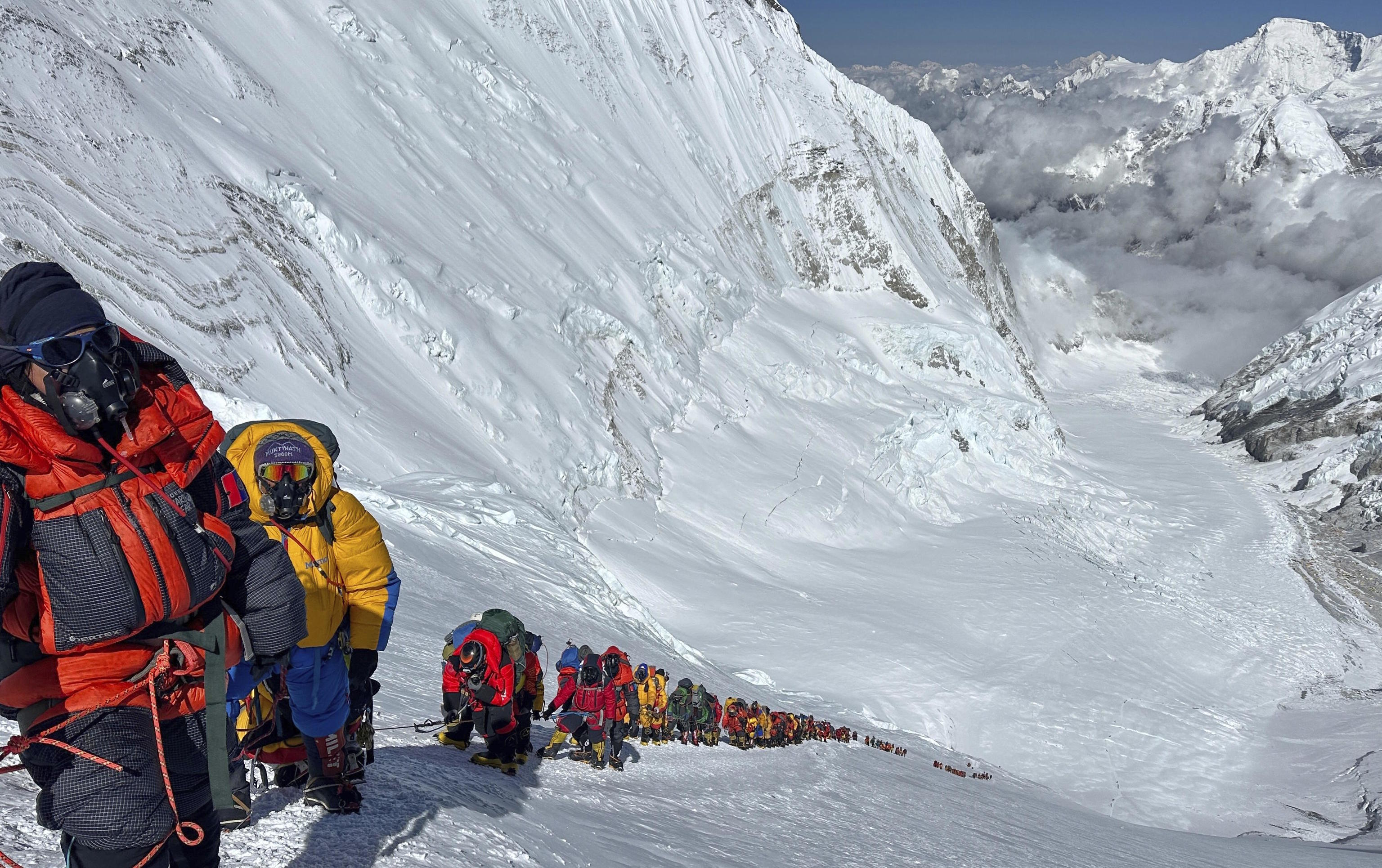In 2007, during the opening up period for China leading to the Beijing 2008 Olympics, the government, then led by Hu Jintao, presented its flagship project for Everest. They planned to first build a highway to the north base camp of the world's highest mountain and then a hotel with a spa, a museum, and a heliport. At 5,150 meters above sea level, a vacation city. Political changes in the country and protests in Tibet between 2010 and 2012 caused the plans to shrink - the first stone of the resort was never laid. However, a road was still paved from the city of Shigatse to the foothills of the Himalayas. What was the result?
Last Friday, a storm caught over 500 hikers on the trails between Everest and Cho Oyu, and rescue operations were carried out for several days, resulting in one fatality. It was a tragedy, a series of adversities, but above all, it demonstrated that one does not need to reach the top of the world to be in danger. Just getting close is enough.
"China built infrastructure with the intention of controlling Tibet, started relocating the majority ethnic population there, and set up a kind of tourist theme park around Everest, Cho Oyu, Makalu, and Lhotse, the four 'eight-thousanders' in the area. During festivities like the Golden Week, their Easter, thousands of inexperienced Chinese hikers without acclimatization find themselves at 5,000 meters with a windbreaker and city shoes. And then two meters of snow fall in a storm, and the inevitable happens," recounts Sebastián Álvaro, a mountaineer, writer, and director of "Al filo de lo imposible" on TVE for 27 years, who knows the area well because he filmed a documentary there about the legendary 1924 expedition of George Mallory and Andrew Irvine.
According to his estimates, the official reports of rescuing hundreds of people in just 48 hours must be inaccurate because "there are no high mountain teams there." "We will never know what really happened," he points out. "From Tingri, the nearest village, they sent a few firefighters who lack experience and are overwhelmed by all the people heading to the north base camp of Everest," analyzes Álvaro. And the data support his claim.
As boasted by the Chinese government itself, last year, for the first time, the number of visitors in what they call the "scenic area of Everest" exceeded half a million, an exaggerated figure. Although the area is twice the size of Spain, Tibet has barely three million inhabitants, and its public services are minimal. There are no accident figures - let alone fatalities - but it is very likely that there have been previous tragedies in the region.
Far from the global outrage caused by queues at the top of the world, in recent years, walks around the base have multiplied, along with the dangers. "On the Chinese side of the Himalayas, there is a plateau with little vegetation, and tourism agencies in the country sell it as a friendly area for walks. The Chinese go there with very little awareness and preparation. Suddenly, they find themselves at 5,000 meters. It is worth noting that the highest peak in the European Union is Mont Blanc, which stands at 4,800 meters," emphasizes Sergi Unanue, owner of the agency Mundo Recóndito, a former Beijing resident for a year, and author of the book "Un sendero entre las nubes" about the Great Himalayan Trail. "There is a very evident risk in making such extreme areas of the world so accessible. The Chinese side is not talked about as much because fewer foreigners travel there, but it also happens on the Nepalese side," adds Unanue.
Moving the base camp, mission impossible
In the southern Himalayas, in Nepal, activity at the foot of the great mountains has also intensified, although there have been no tragedies since the 2015 avalanche that claimed the lives of 22 people at the south base camp of Everest. Every year, between three and five deaths are reported due to cerebral edema caused by altitude sickness, but the fatality rate is low considering that around 30,000 climbers visit the area annually. Although the numbers are significant, extreme touristification like that in China is unlikely to occur in Nepal. The budgets of the two countries are vastly different, the geography of both areas is very distinct, and tourists come from different places.
In the Nepalese region, while travel agencies run by sherpas believe that the business is in the heights, treks to the south base camp are mostly organized by foreign companies, and their clients are better prepared. They are usually well-informed, receive advice and assistance from these companies regarding equipment or food, and typically invest enough time to acclimatize - between 10 and 12 days for the route.
This winter, the Nepalese government, led by Ram Chandra Poudel, announced the completion of the so-called "highway to Everest," as reported by numerous international media outlets, but it was merely a road between Kathmandu and Surke, near Lukla, a route that tourists already often traveled by plane. In principle, the area is safer, although the threat looms over the south base camp in the form of melting glaciers. Due to global warming, the Khumbu glacier continues to fracture, increasing the danger at the camp. There is a project to move it 300 or 400 meters lower, but there is a lack of budget and logistics. Just getting close is enough to be in danger.
